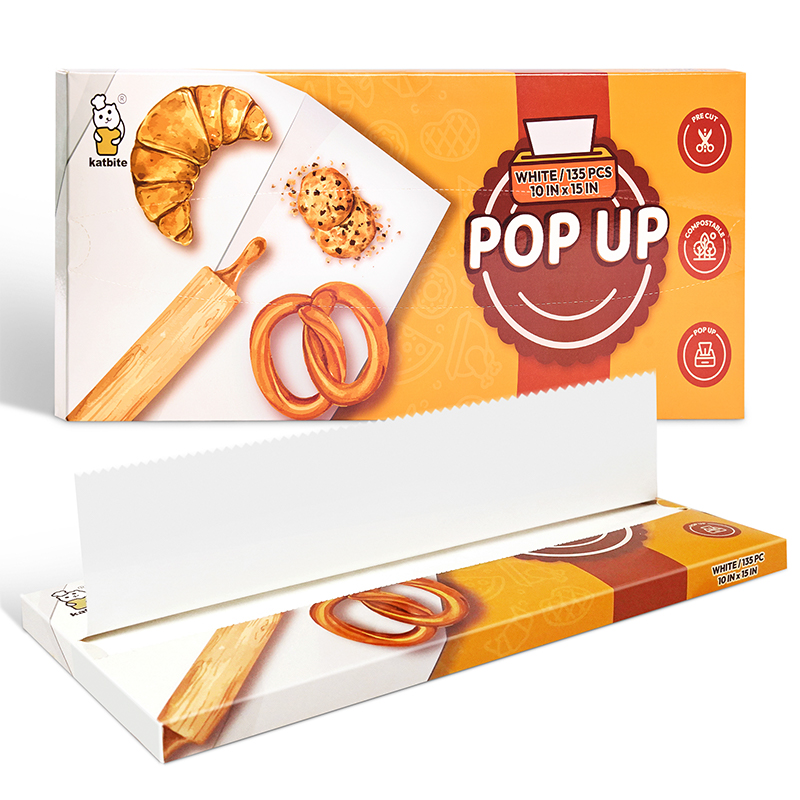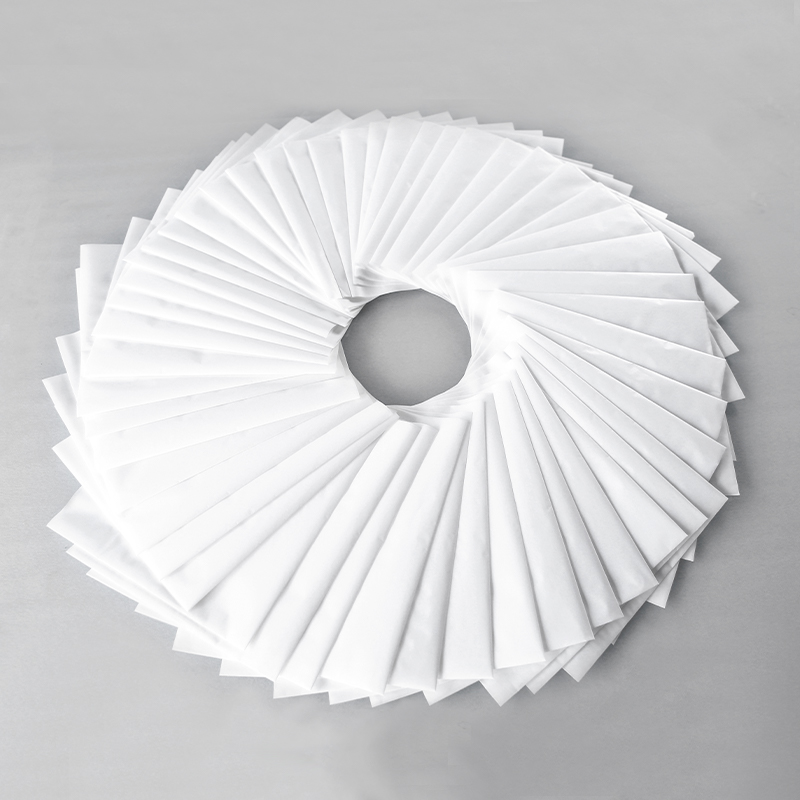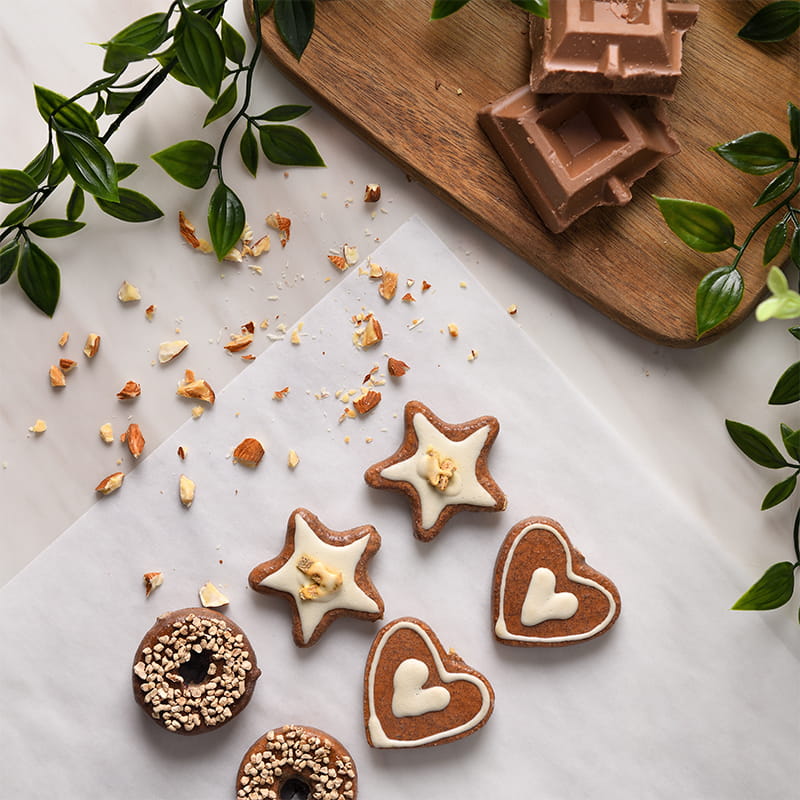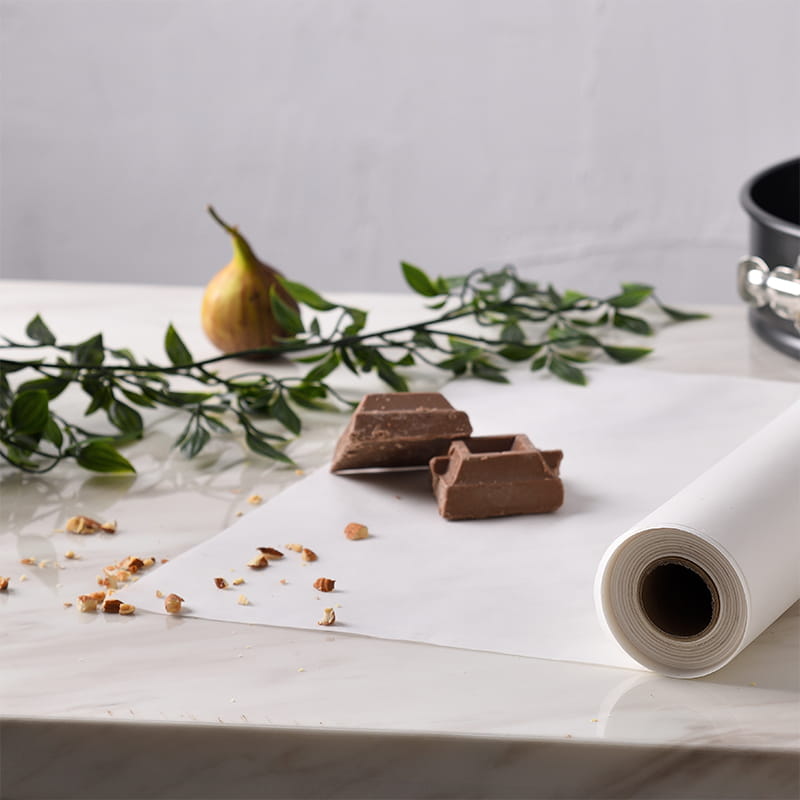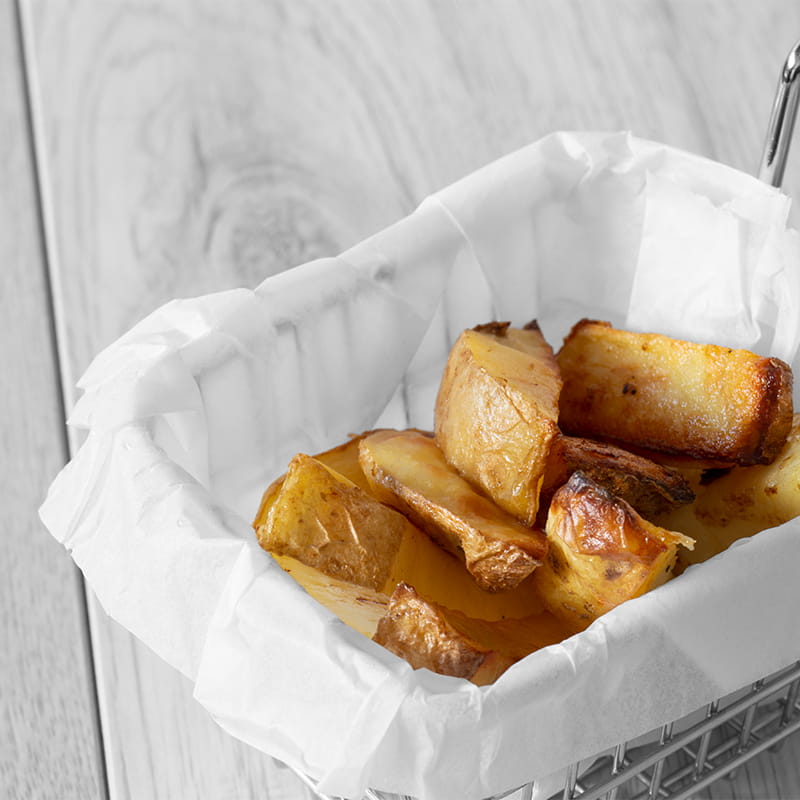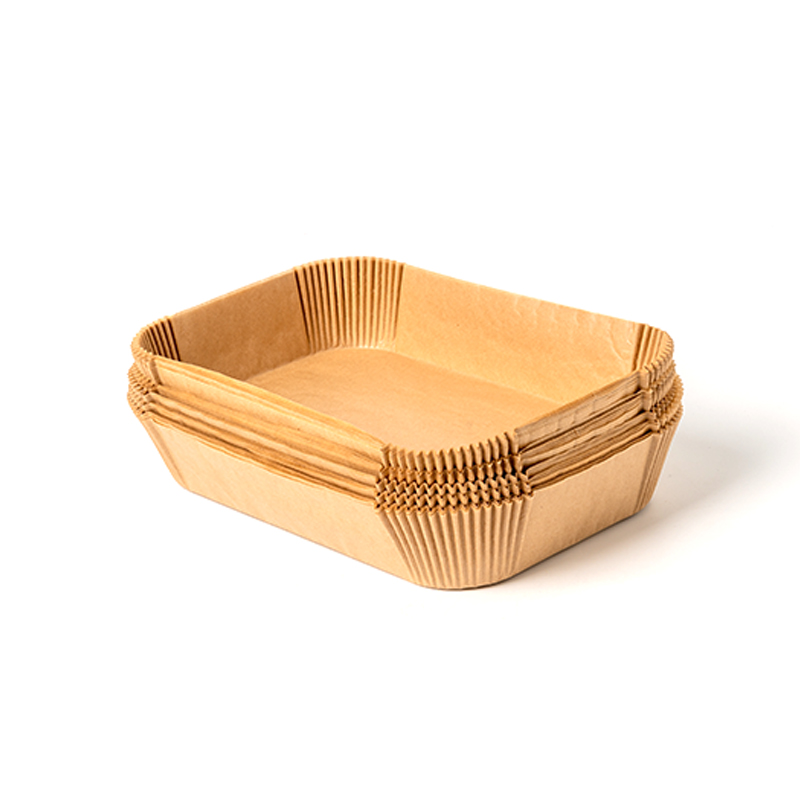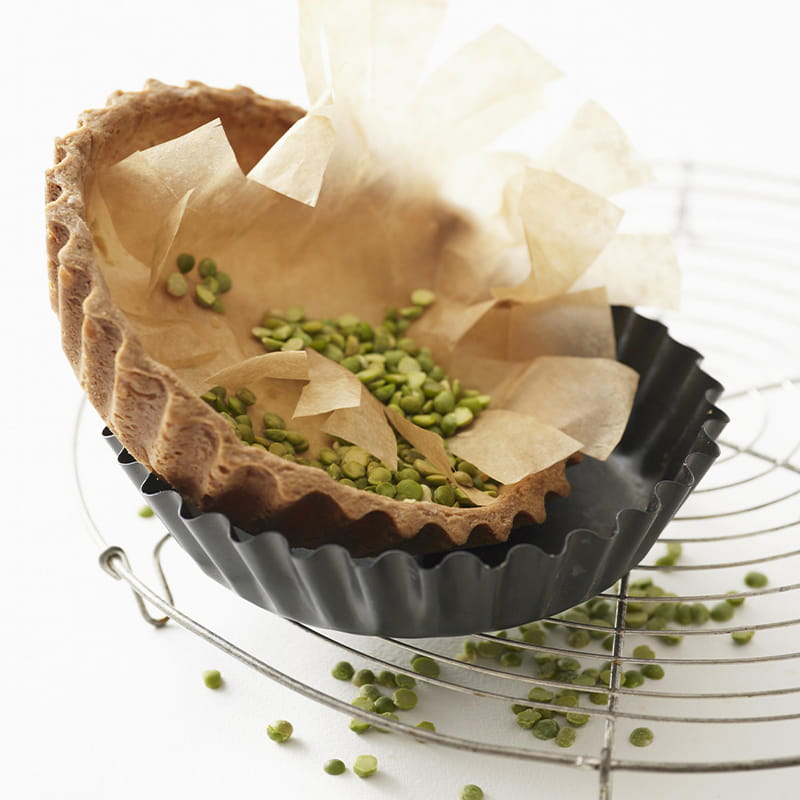Product details: Pop-up parchment paper sheets, an environment-friendly product, are composed of wood pulp and are double-side coated with silicone. Such a coating makes our paper smooth, greasepr...
See DetailsHow to leverage the multiple values of baked parchment paper
Baking parchment paper, often simply called parchment paper, is a quiet powerhouse in kitchens both professional and home-based. Far more than just a tool to prevent sticking, its unique properties unlock a range of culinary benefits, simplifying tasks, enhancing results, and preserving valuable cookware. Understanding the diverse reasons for its use reveals why it's considered an essential component in effective and enjoyable cooking and baking.
The Foundational Advantages: Why Parchment Earns its Place
The decision to incorporate parchment paper into kitchen routines stems from several compelling practical benefits:
1.Significantly Simplifies Cleanup: Perhaps the more universally appreciated benefit. Lining a baking sheet, roasting pan, or cake tin with parchment creates a protective barrier. Oils, sugars, sauces, and baked-on bits adhere to the parchment, not the pan itself. Once cooking is complete, simply lifting out the parchment leaves behind a remarkably clean surface, drastically reducing scrubbing time and effort. Pre-cut sheets further streamline this process.
2.Consistent Non-Stick Performance: Achieving reliable non-stick results without relying heavily on fats like butter or oil is a key advantage. Parchment's silicone-coated surface provides a smooth barrier that allows delicate items like cookies, meringues, financiers, or sticky granola bars to release cleanly and intact. This consistency is particularly valuable for intricate baked goods prone to breaking.
3.Protects Baking Sheets and Pans: Repeated exposure to high heat, sugars, and fats can degrade the surfaces of baking sheets and pans over time, causingto discoloration, warping, and stubborn residue buildup. Parchment paper acts as a shield, preventing direct contact between food and metal. This protective layer helps maintain the condition and longevity of your bakeware.
4.Facilitates Easy Food Transfer and Serving: Parchment provides a stable, non-stick platform for moving food. Entire batches of cookies or scones can be slid effortlessly from the baking sheet onto a cooling rack by lifting the parchment. Items like brownies or focaccia can be lifted completely out of their pans using the parchment "handles" created by overhanging edges. This makes transferring delicate or sticky items to serving platters or storage containers much simpler.
Expanding the Horizon: Creative and Practical Applications
The utility of parchment paper extends far beyond basic baking sheet lining. Its heat resistance and non-stick properties lend themselves to numerous culinary tasks:
Optimizing Cookie Baking: Beyond preventing sticking, lining cookie sheets with parchment promotes more even browning on the bottom of cookies. The paper also helps insulate the dough slightly, contributing to a more consistent bake. Its slipperiness ensures fragile or intricately shaped cookies lift off without losing a crumb.
Streamlining Decorating Cleanup: When decorating cookies or cakes, lay parchment paper directly on your countertop or workspace. Frosting drips, stray sprinkles, and crumbs land on the parchment. Once finished, gather the parchment and discard the mess, leaving your counter pristine.
Effortless Dough Handling: Parchment is invaluable for rolling out dough. Place dough between two lightly floured sheets of parchment. This prevents sticking to the rolling pin and counter, eliminates the need for excessive flour (which can toughen dough), and allows for easy rotation and flipping. The parchment can then be used to transfer the rolled dough directly to a pan or into the oven (e.g., for galettes or rolled pastry crusts).
Cooking En Papillote (In Parchment): Creating sealed parchment packets is a classic technique, especially for fish and vegetables. Ingredients are placed in the center of a sheet, the parchment is folded and crimped to create an airtight pouch, and then baked. This method steams the food in its own juices, intensifying flavors and yielding tender, moist results with minimal added fat. It also makes for an elegant presentation.
Containing the Mess: Tackling sticky or crumbly projects like homemade granola, candied nuts, roasted oats, or even certain candies (like toffee or brittle) becomes much less daunting with parchment. Line the pan thoroughly to catch every drip and crumb, ensuring cleanup is straightforward.
Roasting Nuts and Seeds: For even roasting and easy removal, spread nuts, seeds, or chickpeas on a parchment-lined baking sheet. The paper prevents sticking and makes it simple to pour the roasted items into a bowl or storage container.
Prepping Sticky Ingredients: Lay parchment on a scale when weighing ingredients like honey, molasses, or sticky doughs. The ingredient can be easily slid off into the mixing bowl, and the parchment discarded.
Understanding the Alternatives: When Parchment Shines
While other materials exist for lining pans, parchment offers distinct advantages:
|
Material |
Primary Advantages |
Primary Limitations |
|
Parchment Paper |
Effective non-stick; Simplifies cleanup; Protects pans; Facilitates transfer; Heat safe for typical baking/roasting; Biodegradable. |
Single-use; Not reusable; Can brown/burn at very high temps (>450°F/230°C often limit); Not microwave safe. |
|
Aluminum Foil |
Can withstand very high heat; Can be shaped/molded; Can create sealed packets; Can be reused for some tasks. |
Can stick, especially to acidic foods; Doesn't promote even browning as well; Can react with acidic foods altering taste; Can tear easily; Not biodegradable. |
|
Silicone Baking Mats |
Reusable; Good non-stick properties; Easy cleanup; Durable over time. |
Higher initial cost; Requires thorough cleaning; Can retain odors; Storage can be bulky; Performance can vary; Not ideal for all shapes/sizes. |
|
Cooking Spray / Grease |
Inexpensive; Directly applied; Flexible for any pan shape. |
Can leave residue; Can burn or smoke; Can sometimes cause sticking if insufficient; Adds extra fat; Doesn't protect pans from buildup. |
Parchment's combination of reliable non-stick performance, ease of use, pan protection, and facilitation of food transfer makes it a frequently preferred choice, particularly for baking and tasks requiring clean release. Foil excels at very high temperatures and shaping, while silicone mats offer reusability. Cooking spray is convenient but lacks the protective and transfer benefits.
Integrating Parchment Effectively: Tips for Use
Trimming to Fit: While pre-cut sheets are convenient, cutting parchment to fit the base of a specific pan ensures better coverage and avoids overhanging paper that could scorch in the oven.
Securing in Pans: For cake pans or brownie pans, a small dab of butter or oil under the parchment corners helps it adhere to the pan, making it easier to spread batter smoothly.
Avoiding Direct Flame/High Broilers: Keep parchment away from direct exposure to oven heating elements or intense broiler heat, as it can ignite or char excessively.
Reading Manufacturer Notes: Some parchment brands may have specific temperature limits; it's generally considered safe up to around 425-450°F (220-230°C) for baking/roasting. En papillote packets are typically safe as the food inside creates a humid environment.
Reuse (Cautiously): While designed for single use, completely clean, dry, and unblemished parchment used for something like baking plain cookies might be reused for a similar, low-mess task once. Avoid reusing it if it has absorbed oils, has food residue, or is at all brittle or darkened.
Conclusion: A Versatile Partner in the Kitchen
Choosing to use parchment paper is less about a single overwhelming reason and more about appreciating the cumulative impact of its numerous benefits. It fundamentally makes the processes of baking and cooking cleaner, more consistent, and less frustrating. From guaranteeing intact cookies and effortless brownie removal to enabling elegant en papillote cooking and protecting valuable bakeware, parchment paper acts as a versatile, reliable partner. Its ability to tackle diverse tasks – simplifying cleanup, ensuring non-stick success, aiding in presentation, and enabling creative cooking techniques – solidifies its status as a fundamental tool for achieving consistently good results and enjoying a more streamlined kitchen experience. Integrating parchment paper is a simple step that yields significant practical rewards.


 English
English 中文简体
中文简体